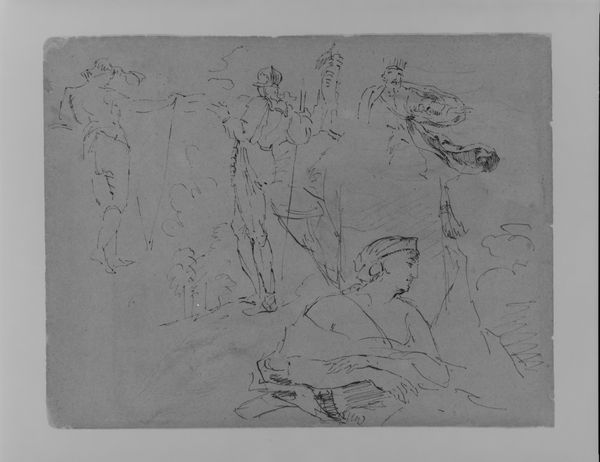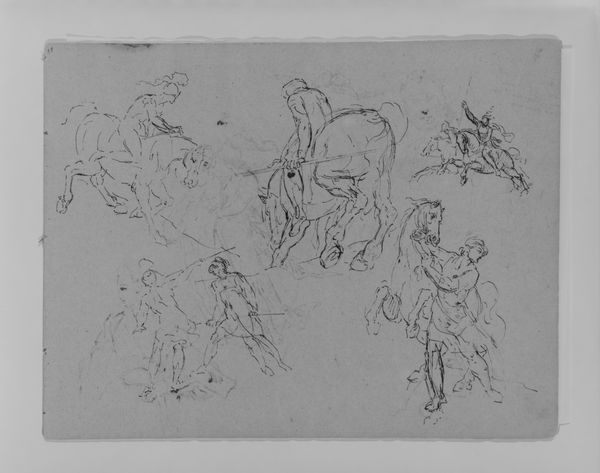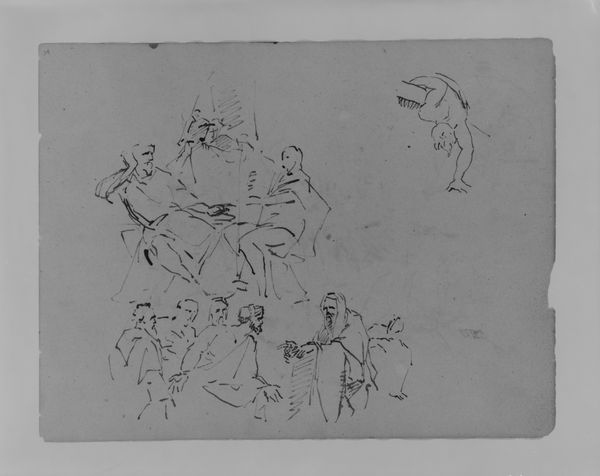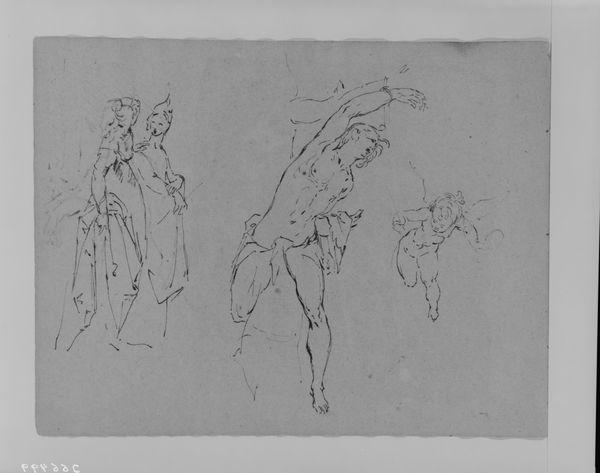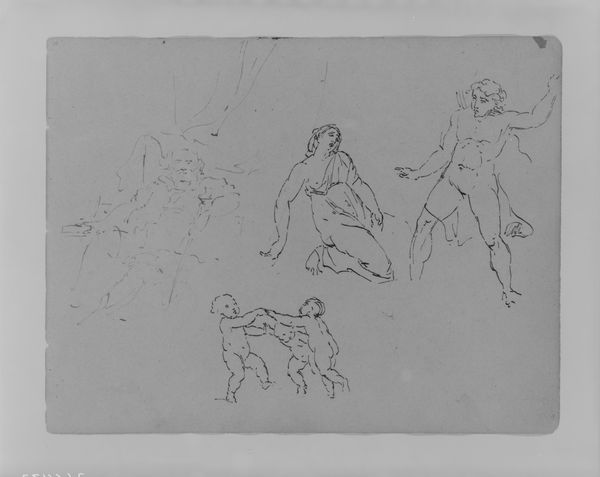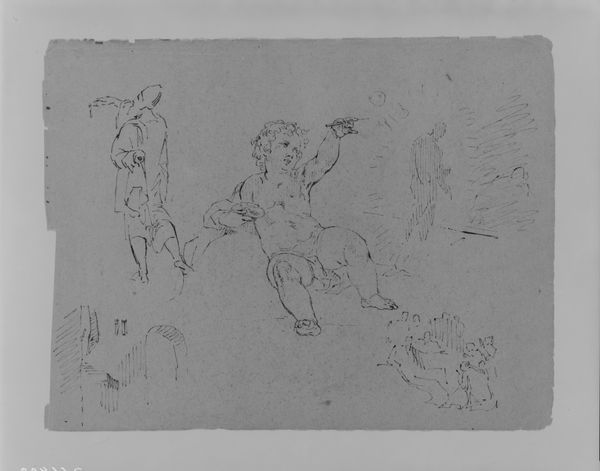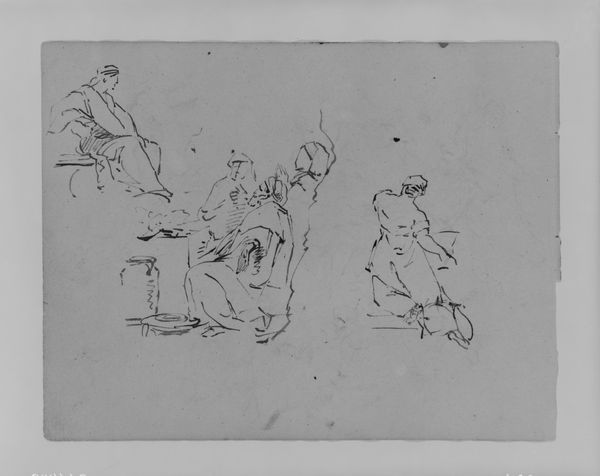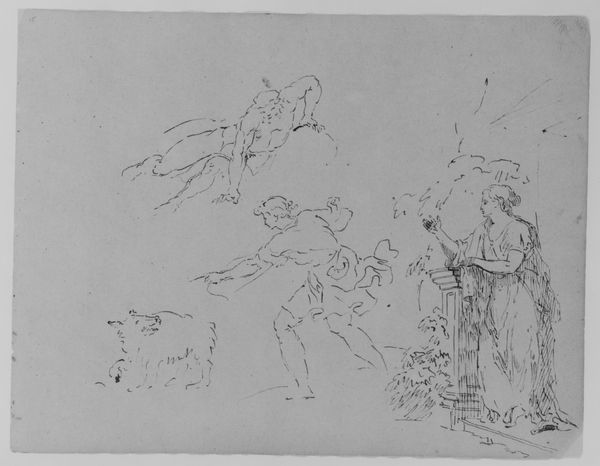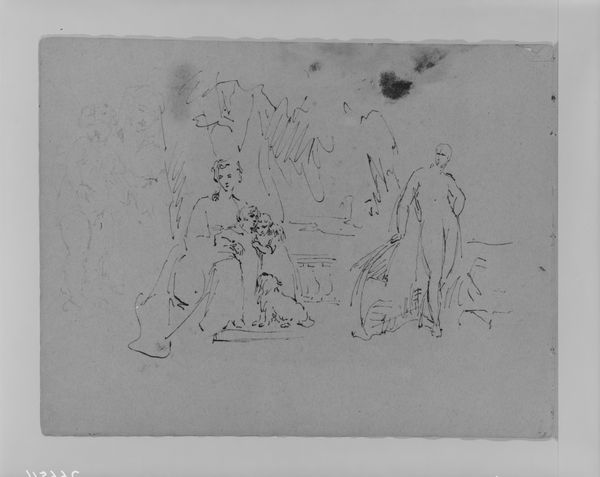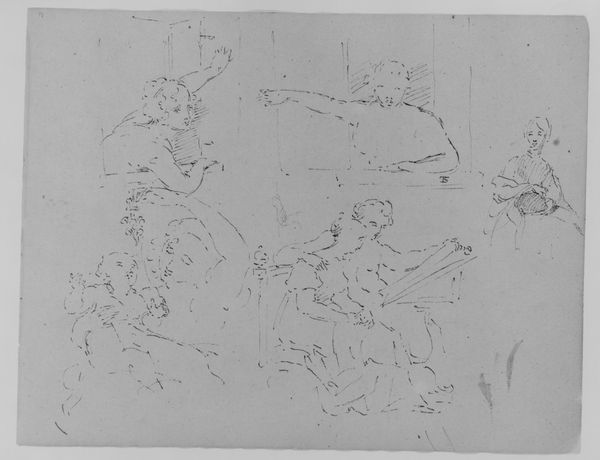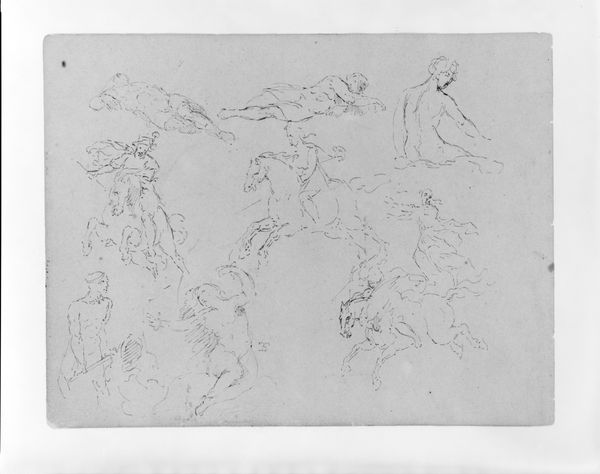
Six Figure Sketches and a Round Table (from Sketchbook) 1810 - 1820
0:00
0:00
drawing, paper, ink
#
portrait
#
drawing
#
human-figures
#
figuration
#
paper
#
ink
#
child
#
romanticism
#
horse
#
human
#
line
#
academic-art
#
sketchbook art
Dimensions: 9 x 11 1/2 in. (22.9 x 29.2 cm)
Copyright: Public Domain
Curator: These restless sketches! I'm immediately drawn to the quality of line and the sheer dynamism in Thomas Sully’s composition. Editor: Well, let’s orient our listeners. What we’re looking at is a page, or perhaps a leaf from a sketchbook. The Metropolitan Museum of Art attributes it to the period of 1810 to 1820 and identifies the artwork as *Six Figure Sketches and a Round Table*. Curator: It's so demonstrative of academic training. Observe the classical figures, the anatomical studies, rendered rapidly but with assuredness. You can practically feel the artist grappling with form and movement! Note that everything has been created from ink on paper. This work speaks of the artist as craftsman and observer, exploring his immediate world and translating his visual discoveries through drawing practice. It embodies a particular system of knowledge that art represents and is constructed. Editor: Precisely. This wasn’t meant for public consumption; it's a private exploration of the human form. It reveals Sully's commitment to the academic tradition and his ambition to insert himself within that history, very revealing to how he perceived his place within the institutions and power structures that defined art. Curator: I agree. And beyond the immediate context of art making, these rapid sketches allow us to explore the intellectual context that underpinned the artistic creation: drawing practice as the exploration and construction of knowledges. How different, this focus, from the later detachment from explicit making of artwork and artistic conception by modern artists. Editor: True. But this focus on craft was strategic as much as anything else; artists like Sully were building and shaping cultural taste, securing patrons, all of that played a part in the choices, styles and imagery employed. These weren’t purely academic exercises. Curator: Certainly the pursuit of patrons informed it, yes, yet I would point back to the hand itself in its skilled pursuit of form to understand his project. Editor: These glimpses offer something invaluable, perhaps more telling in their casualness than the grand portraiture for which Sully is typically celebrated. Curator: It's remarkable how much information and inspiration he conveys through so few lines! I will think differently about his approach. Editor: Agreed; it complicates any simplistic idea of an "artist" or even his biography by showing us something more immediate, tactile, something that is caught but not settled.
Comments
No comments
Be the first to comment and join the conversation on the ultimate creative platform.
